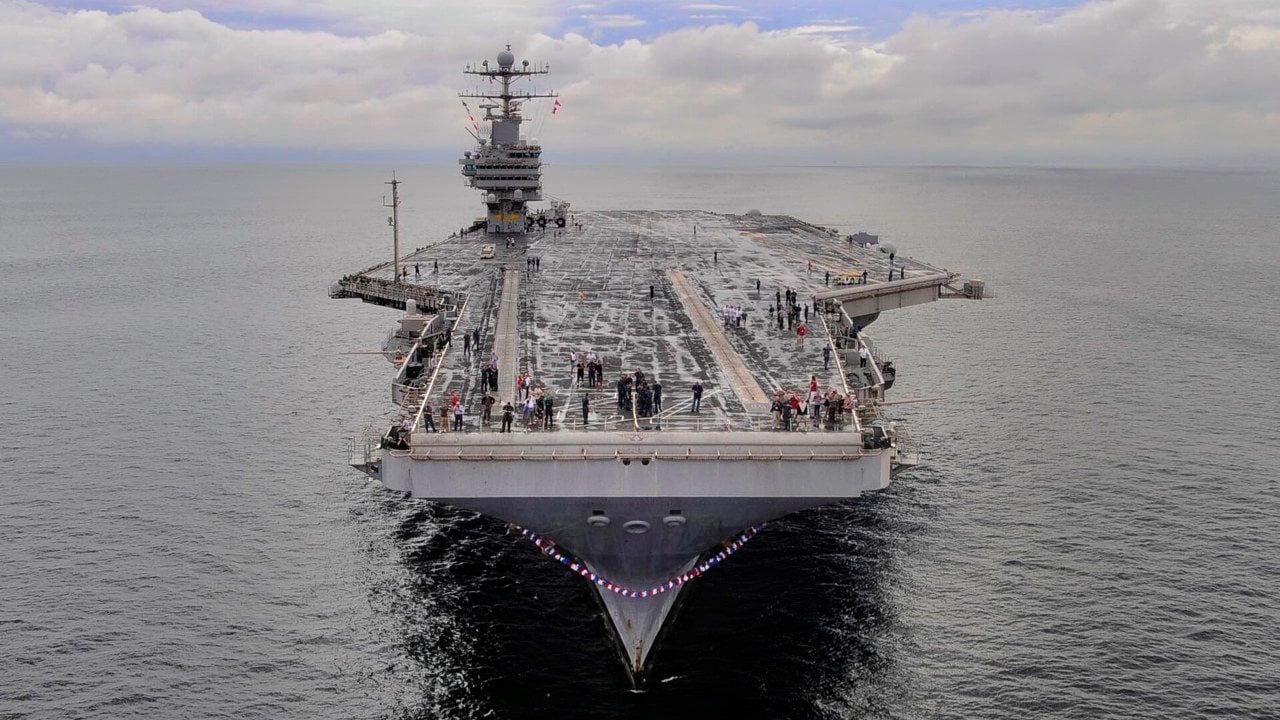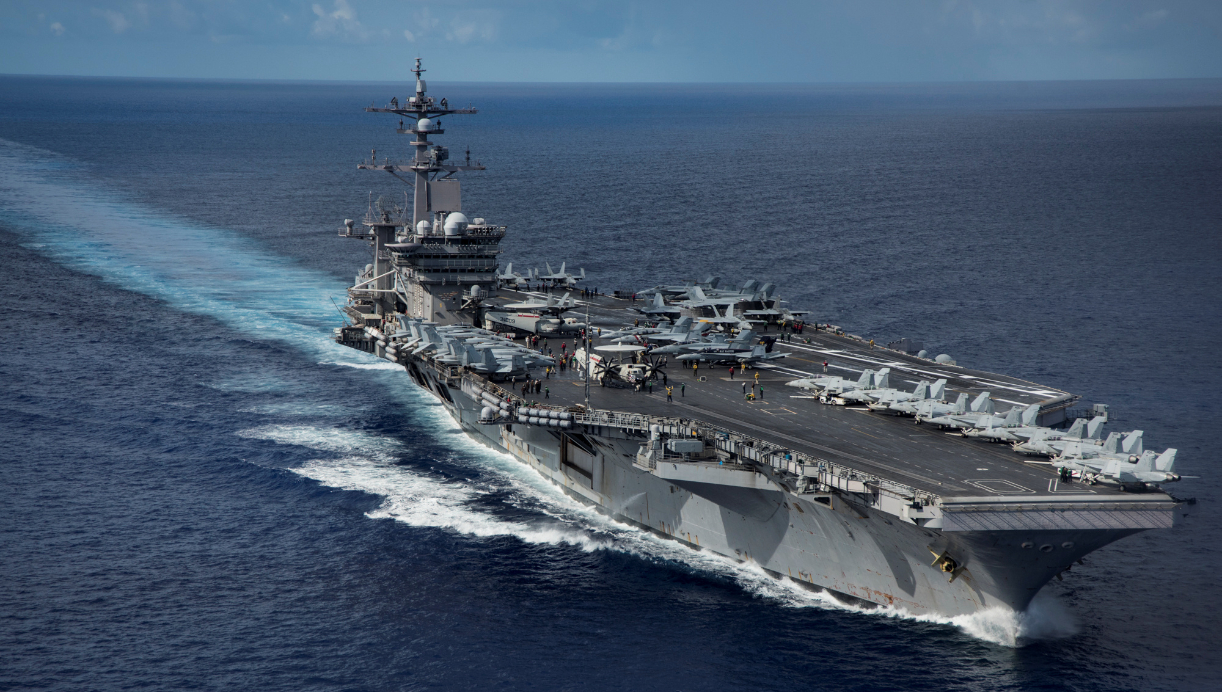Nimitz-Class Aircraft Carrier Nightmare Can Be Explained in 2 Words
The Nimitz-class carriers, icons of U.S. power since the Cold War, may struggle in future conflicts dominated by anti-access/area-denial (A2/AD) systems. Though carrying impressive weaponry, advanced sensors, and a powerful air wing, their effectiveness could be hindered if forced to remain out of A2/AD range, potentially nullifying their role as force projectors.
Obsolete Carrier: The Nimitz-class carriers, icons of U.S. power since the Cold War, may struggle in future conflicts dominated by anti-access/area-denial (A2/AD) systems. Though carrying impressive weaponry, advanced sensors, and a powerful air wing, their effectiveness could be hindered if forced to remain out of A2/AD range, potentially nullifying their role as force projectors.

-As aging Nimitz-class carriers are phased out in favor of the new Ford-class, critics argue carriers are relics in an A2/AD-dominated world.
-Some believe U.S. defense priorities should shift toward more adaptable, cost-effective platforms that better address current strategic realities.
The End of an Era? Nimitz-Class Aircraft Carriers and the A2/AD Challenge
The United States has eleven nuclear-powered aircraft carriers at its disposal. Ten of them belong to the Nimitz-class. When the next great power war erupts, the advent of anti-access/area denial (A2/AD) systems will have negated much of the operational freedom that carriers have enjoyed in the postwar era.
Still, American flat tops are modern marvels of engineering.
First deployed in 1972, these nuclear-powered carriers were designed to have a lifespan of roughly 50 years with one mid-life refueling. These warships were designed with achieving naval supremacy in a contested environment—and keeping it. Created with America’s Cold War antagonist, the Soviet Union, in mind, these great ships are holdovers from a bygone era.
America's Post-Cold War Symbol of Power
One might argue, however, that their true heyday came in the wake of the collapse of the Soviet Union and the end of the Cold War. These systems proved most potent when the United States stood as the unchallenged global hegemon in a unipolar world system.

A floating airbase able to be deployed anywhere (so long as the sea-lanes are open and the waterways around a target are relatively uncontested), these behemoths stalked the deep blue seas imposing US will upon other countries for decades. They also served as vital relief ships whenever humanitarian crises hit—at great expense to the US taxpayer.
But during the Cold War, such operations were one way the Americans bested the Soviets in the battle for the hearts-and-minds of the world’s population.
In the post-Cold War era, such taxpayer-funded humanitarian missions had the effect of showing the flag, reminding people from around the world of America’s power and ubiquity.
Nimitz-Class Carrier Specs
The Nimitz-class was manufactured by the Huntington Ingalls Industries Newport News Shipbuilding Company, the great ship is powered by two Westinghouse A4W nuclear reactors. She carries a crew of around 3,200 plus more than 2,000 personnel as part of the carrier’s mighty airwing.
A Nimitz-class carrier displaces a full load of 100,000 tons.
This boat can travel at more than 30 knots (about 34 miles per hour). While each ship of this class has variegated arsenals, generally speaking, the Nimitz-class comes armed with NATO RIM-7 Sea Sparrow Surface-to-Air Missiles (SAM), which are launched by two-to-three Mk29 missile launchers. If the Sea Sparrow SAMs aren’t needed, the Nimitz-class can pop off eight RIM-162 Evolved Sea Sparrow Missiles (ESSM). Along with these systems is a Mk.49 missile launching system that can deploy 21 RIM-116 Rolling Airframe Missiles (RAM). A Phalanx Close-In Weapons System (CIWS) protects the warship.
It's real offensive capability, though, resides with her airwing. She carries around 60 aircraft (after all, you cannot have an aircraft carrier without aircraft!) Yet, in today’s era of A2/AD, there is real concern among experts that the Nimitz-class carriers would be kept out of the range of A2/AD systems.

Therefore, her airwing would be unable to deploy into a contested environment, as they would be out of range. Of course, they could always refuel midair. The only problem with that is, if the A2/AD network they’re going up against is as comprehensive as America’s rivals—such as China—have made them, then midair refueling tankers would be easy targets, too.
Here again, we have an example of America’s greatest surface warship to date being negated by relatively cheap A2/AD systems.
Other systems onboard that help the ship’s warfighting abilities are magnificent sensors, such as the AN/SPS-48E electronically scanned array 3D air search radar, the AN/SPS-49 long-range 2D air search radar, AN/SPQ-9 target acquisition radar, AN/SPN-46 precision approach and landing system, as well as a multiplicity of other systems designed to help the air operations for a carrier. These carriers are loaded with electronic warfare suites along with torpedo decoys meant to stymie incoming torpedo attacks.
Is a Replacement Carrier for the Aging Nimitz-class Needed?
The size, speed, and reach of the Nimitz-class carrier is impressive. In an uncontested domain or even a contested domain with lesser advanced systems than what most American rivals have today deployed, these carriers would continue to be the undisputed heavyweight champion of the high seas.
The US has made a long-term investment into these carriers, and it has gotten much return on that investment. Although, as the world moves into the A2/AD era, the US Navy should be spending its limited capital developing systems that are more relevant to this new strategic era.
Rather than focus on building relevant technologies for the future, though, the Navy has decided to go-for-broke with the new Gerald R. Ford-class carriers which are meant to slowly replace the aging Nimitz-class carrier. Here again is a great example of Washington not understanding the reality of what we are facing today globally. Much as the battleship of old, the aircraft carrier is basically useless in today’s age of A2/AD.
When the Nimitz-class is ultimately retired, that should be the end of the carrier.
Author Experience and Expertise: Brandon J. Weichert
Brandon J. Weichert, a National Interest national security analyst, is a former Congressional staffer and geopolitical analyst who is a contributor at The Washington Times, the Asia Times, and The-Pipeline. He is the author of Winning Space: How America Remains a Superpower, Biohacked: China’s Race to Control Life, and The Shadow War: Iran’s Quest for Supremacy. His next book, A Disaster of Our Own Making: How the West Lost Ukraine, is due October 22 from Encounter Books. Weichert can be followed via Twitter @WeTheBrandon.
All images are Creative Commons or Shutterstock.
From the Vault
Russia Freaked Out: Why the U.S. Navy 'Unretired' the Iowa-Class Battleships
Battleship vs. Battlecruiser: Iowa-Class vs. Russia's Kirov-Class (Who Wins?)


